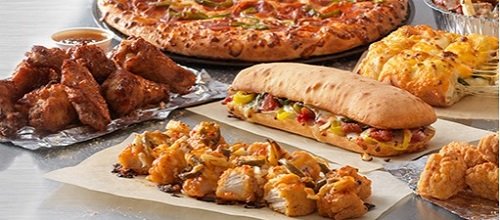The United States Supreme Court has just delivered a blow to Domino’s pizza and a victory to people with disabilities, ruling the company must make sure people with disabilities can use its website and app to order.
The court on Oct. 7 denied Domino’s petition to overturn a lower court ruling that said the pizza delivery company was responsible for making sure people with disabilities could order from its site.
The case revolved around whether the Title III of the Americans with Disabilities Act requires a website or mobile-phone application that offers goods or services to the public to satisfy accessibility requirements for people with disabilities.
The Ninth Circuit, a lower court, held that Title III requires any "brick-and-mortar public accommodation" that offers goods or services online to ensure that its websites and apps be fully accessible to individuals with ADA-covered disabilities.
Guillermo Robles, a blind man, argued he was being deprived of his right to access Domino’s product, due to barriers on its website.
He said he needed to use special screen reading software, such as Job Access With Speech, or other means. Robles also connects to the internet via his iPhone, which has Apple's voice over screen reading program built into its operating system.
"For screen-reading software to function, the information on a website or on a mobile application must be capable of being rendered into text,” Robles’ attorneys said regarding his inability to order online.
This typically means graphics and embedded hyperlinks must include alternative text, a description of the image that appears when a cursor floats over it or screen-reading software detects it, allowing blind people to order through it.
“The company has pioneered technology that makes it very easy to get your order,” Robles' attorneys argued, noting Domino’s could easily provide this access.
Domino’s sought to overturn that, but the Supreme Court stood by the lower court ruling, denying the petition on Oct. 7, delivering a victory to those with disabilities and a defeat for Domino’s.
“The lower court said that the ‘nexus between Domino's website and app and physical restaurants’ was ‘critical to [its] analysis,’" lawyers on behalf of Guillermo Robles argued.
Domino's, however, argued that the Web was very different than an actual restaurant - and that rules for brick-and-mortar locations didn't extend to the Web in the same manner.
“Public accommodations like restaurants may need to provide auxiliary aids like Braille menus to ensure that disabled customers can fully enjoy the restaurant’s offerings,” Domino’s lawyers argued. “But Title III does not require public accommodations to equip each website, app, telephone hotline, stairway, or mail-order catalogue with the aids necessary to provide equal access to that particular method of accessing goods or services.”
The Ninth Circuit had ruled, essentially, that the ADA could be extended to the Web, protecting people sitting at home much the way it protected those seated in a restaurant.
“Domino’s website and app facilitate access to the goods and services of a place of public accommodation—-Domino’s physical restaurants,” the Ninth Circuit ruled, indicating the Web acted as an extension of a restaurant.
Attorneys on behalf of Domino’s argued that this significantly extends and expands the ADA for service providers, such as restaurants, into the online world.
“Not only does the Ninth Circuit’s decision significantly expand the ADA’s scope, but it also carries immense implications for the ways in which businesses nationwide engage in e-commerce,” according to the company’s attorneys.
Domino's website and app before the case went to court began displaying a telephone number that customers using screen-reading software could dial to receive assistance, but Robles argued that could lead to waiting times.
“There are substantial reasons to believe that the phone number does not provide the same level of independence and convenience as does the website and the mobile app,” Robles’ lawyers said.










